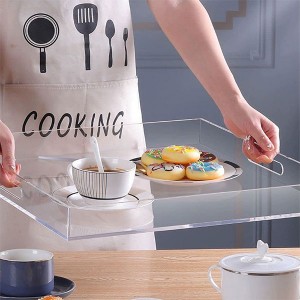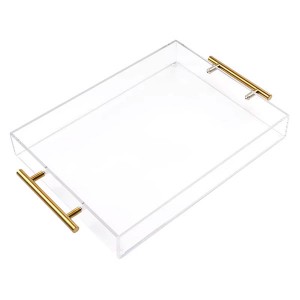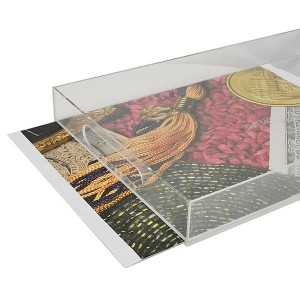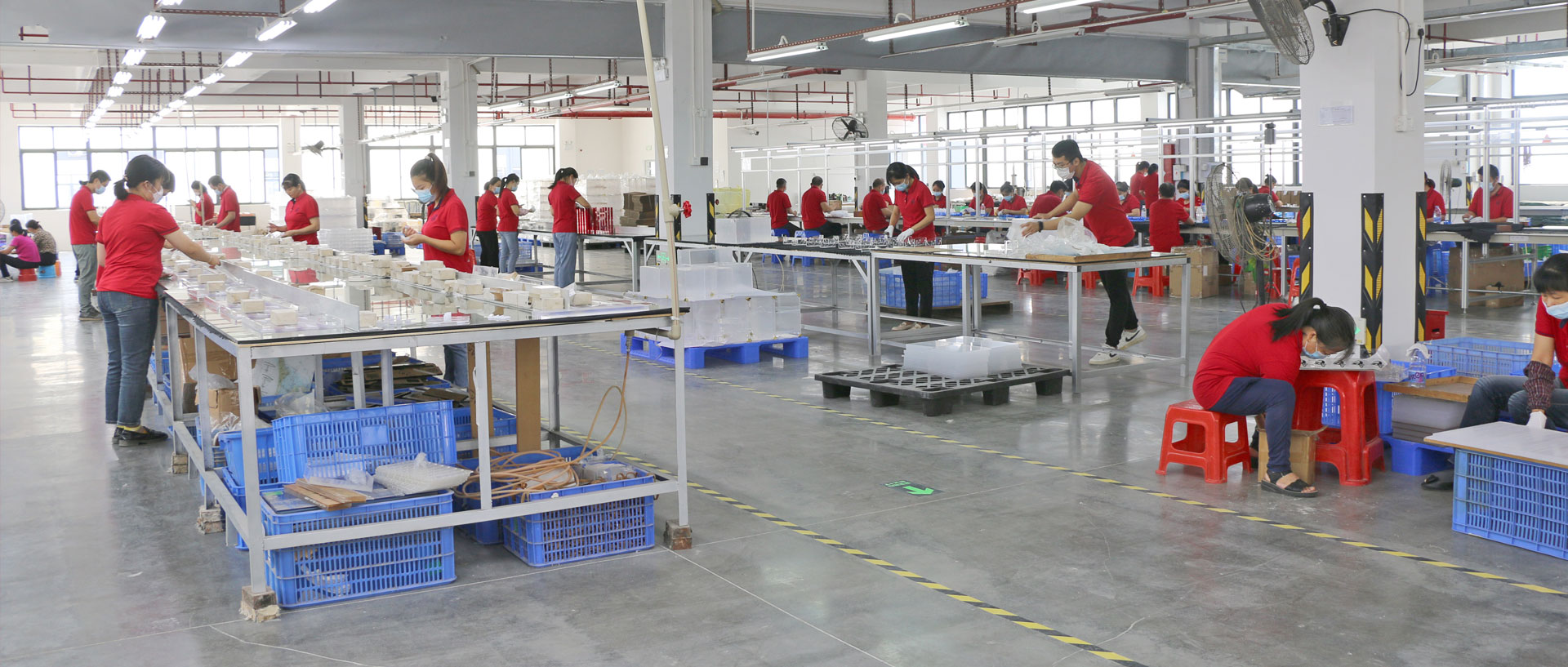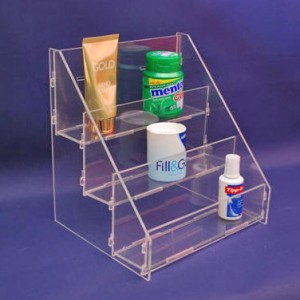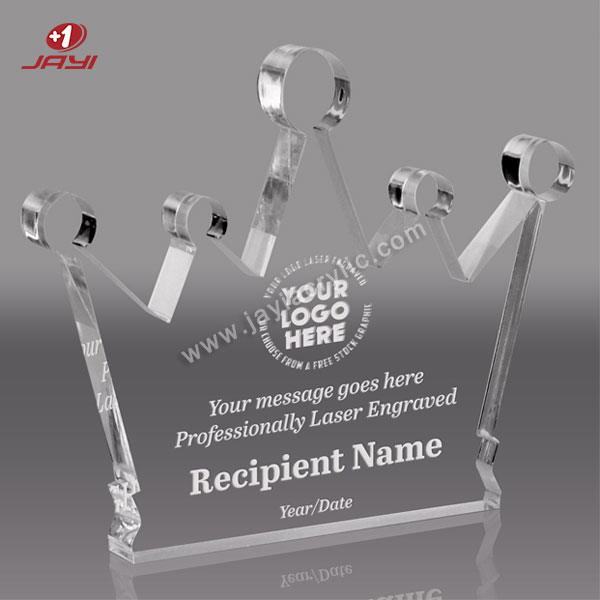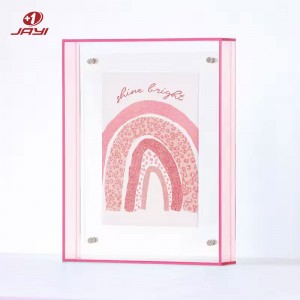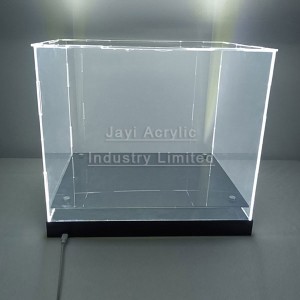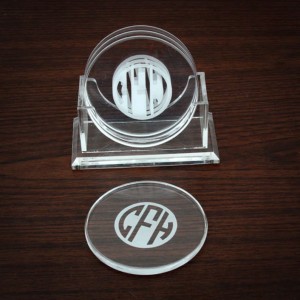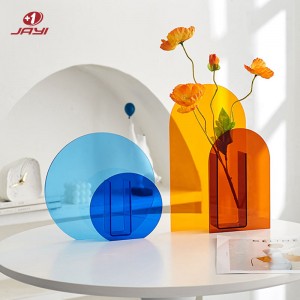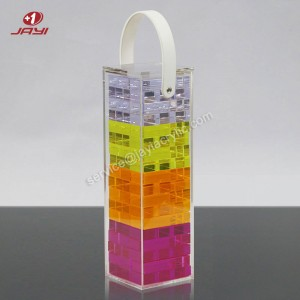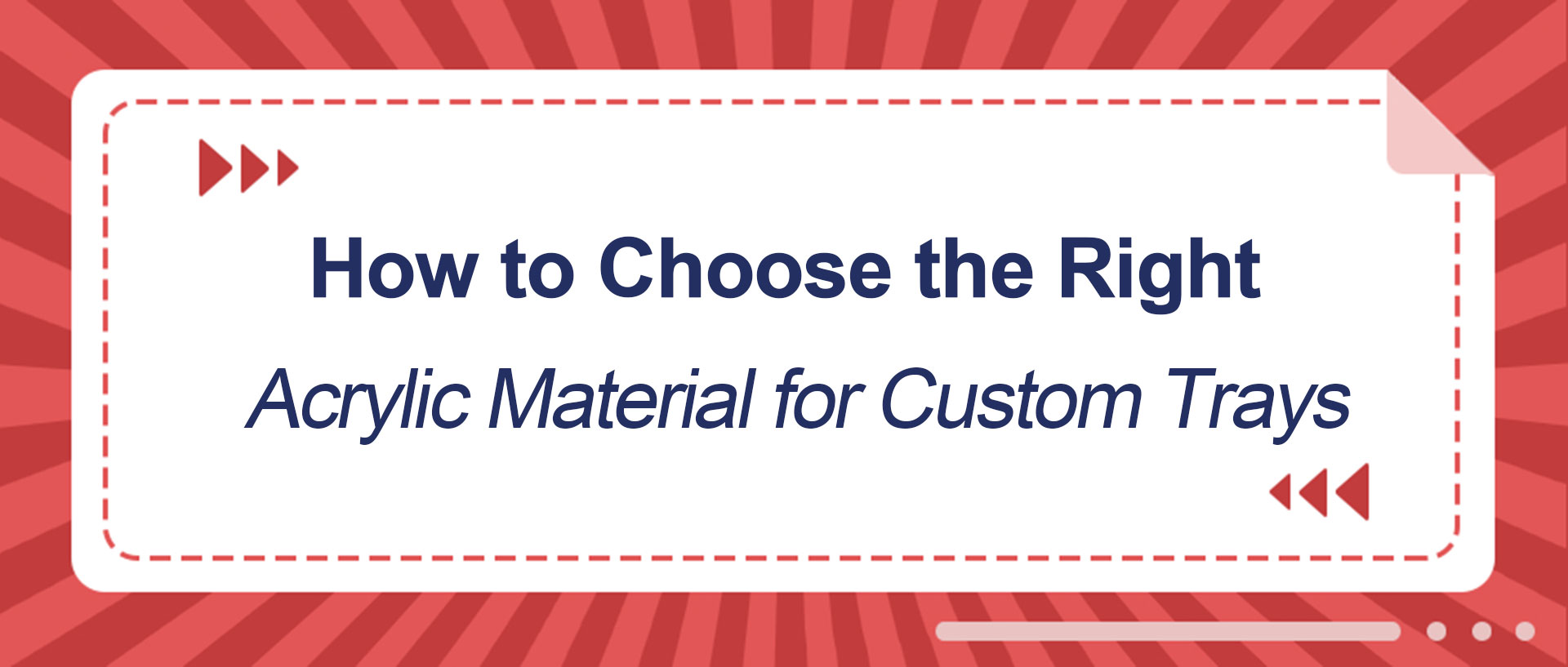
Acrylic, often referred to as Plexiglass or Lucite, is a transparent thermoplastic that provides an excellent alternative to glass. It is lightweight, shatter-resistant, and can be easily molded into different shapes and sizes. These characteristics make acrylic an ideal material for custom trays, providing both practical use and visual appeal.
What is Acrylic?
Acrylic is a polymer material that stands out for its clarity and strength. Unlike traditional glass, acrylic is less prone to breaking, which makes it a safer and more durable option for everyday use. It is also much lighter than glass, making it easier to transport and handle.
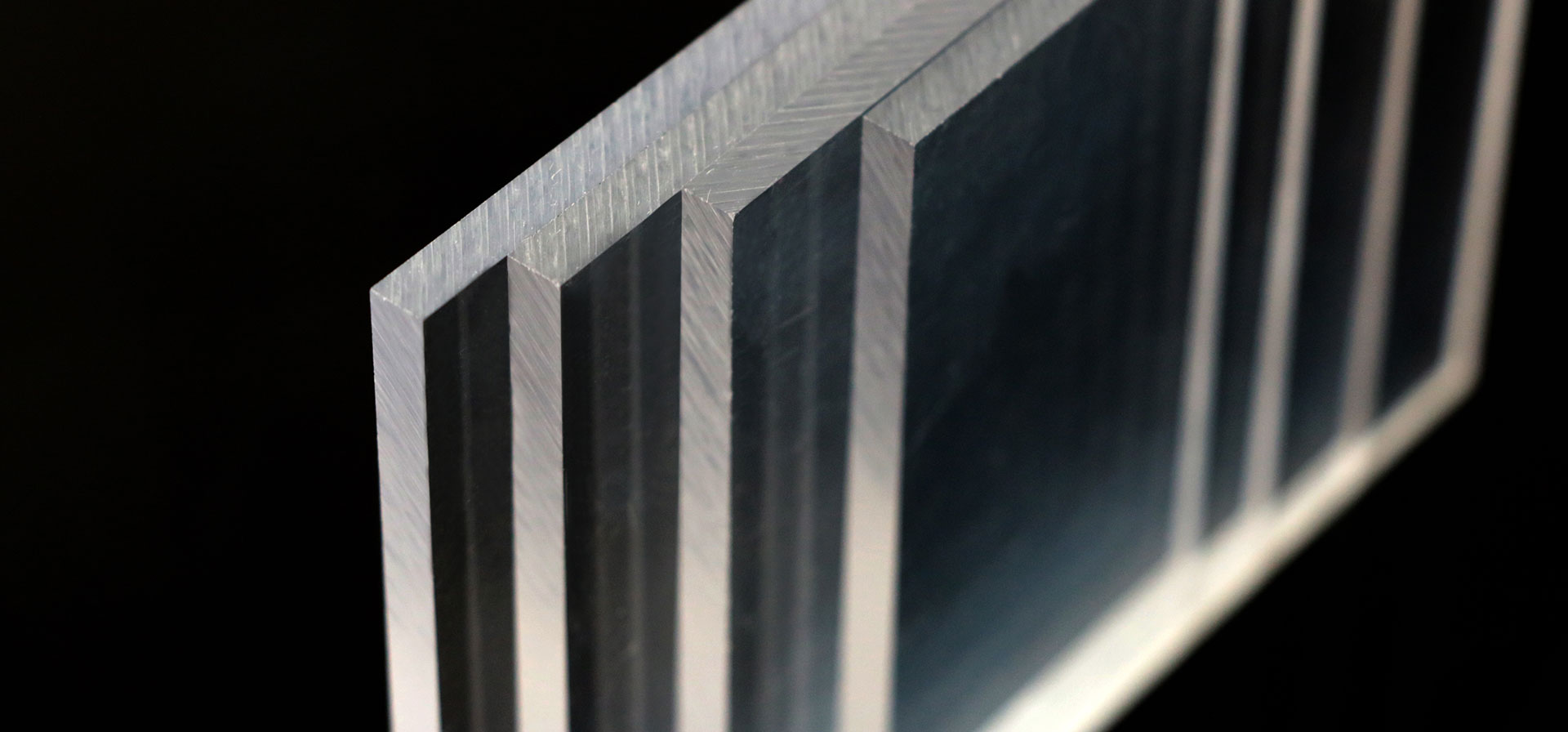
Historical Background of Acrylic
The development of acrylic dates back to the early 20th century, initially used in military applications due to its shatter-resistant properties. Over time, it transitioned into commercial and consumer markets, becoming a staple material in various industries, including home décor and furniture design. Its versatility has made it a favorite among designers and manufacturers.
Acrylic vs. Other Materials
When compared to materials like glass or polycarbonate, acrylic offers a unique blend of benefits. While glass is heavier and more fragile, acrylic provides similar transparency with greater impact resistance. Polycarbonate is another alternative, known for its toughness, but it lacks the clarity and scratch resistance of acrylic.
Types of Acrylic
Acrylic comes in various types, each with unique properties. Here are some common types you might consider for your custom trays:
Clear Acrylic
Clear acrylic offers high clarity and is perfect for showcasing the contents of the tray. It's a popular choice for those who want a minimalist look. Its transparent nature allows the tray to blend seamlessly with any environment, making it versatile for different settings.
Colored Acrylic
Available in a wide range of colors, this type allows you to add a personal touch to your trays, making them vibrant and unique. Colored acrylic can be used to match specific themes or décor, providing an opportunity to reflect personal style or brand identity.
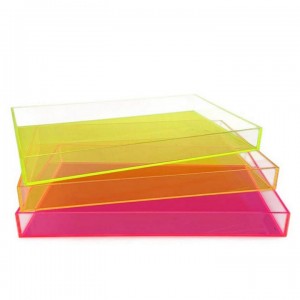
Colored Acrylic Tray
Frosted Acrylic
Frosted acrylic provides a semi-transparent look, adding a touch of elegance and privacy to your trays. It's ideal for situations where you want to obscure the contents slightly. The diffused appearance not only enhances privacy but also adds a sophisticated texture.
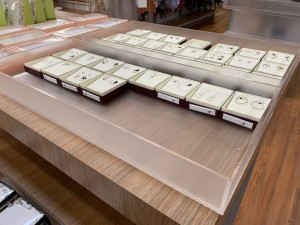
Frosted Acrylic Tray
Textured Acrylic
Textured acrylic features patterns or textures on the surface, which can enhance grip and add a decorative element to the trays. This type of acrylic is particularly useful in environments where slip-resistance is important, such as in kitchens or bathrooms. The texture also adds an artistic flair to the design.
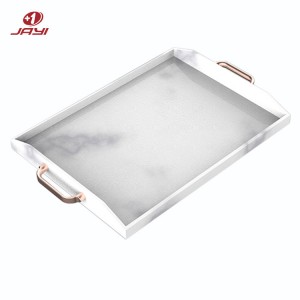
Marble Lucie Tray
Mirror Acrylic
Crafted from high-gloss acrylic, this tray mimics the reflective surface of a mirror, adding a sleek, modern touch to any space. Its polished finish creates an illusion of depth, ideal for displaying cosmetics, jewelry, or decorative items while enhancing light in the room. Resistant to shattering and easier to maintain than glass, it combines functionality with elegance. Perfect for vanity setups, coffee tables, or as a chic organizer, its mirror-like quality elevates both minimalist and opulent decor styles.

Mirror Acrylic Tray
Iridescent Acrylic
Featuring a mesmerizing rainbow-like sheen, this tray captures light to shift hues from purple to blue, green, and pink, creating a dynamic visual effect. Made from durable acrylic, its iridescent coating adds a whimsical, ethereal charm to desks, shelves, or dining tables. Versatile for holding candles, plants, or serveware, it blends bohemian flair with contemporary design. The non-porous surface ensures easy cleaning, making it a stylish choice for both everyday use and special occasions.
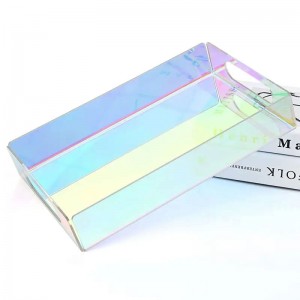
Iridescent Acrylic Tray
Specialty Acrylic
There are specialty acrylics that incorporate additional features like UV protection or anti-glare properties. These are designed for specific environments or uses, such as outdoor settings or in areas with high light exposure. Specialty acrylic can be an excellent choice for trays that need to withstand specific conditions.
Factors to Consider When Choosing Acrylic for Trays
Selecting the right acrylic material involves considering several factors. Here's what you need to keep in mind:
Purpose and Functionality
Determine the primary use of your custom trays. Are they for decorative purposes, or do they need to withstand heavy use? For instance, trays used in commercial settings may require more durable acrylic to handle frequent handling and weight. Consider whether the trays will be used for serving food, organizing items, or as part of a display.
Thickness of Acrylic
The thickness of the acrylic sheet is another essential factor. Thicker acrylic offers greater strength and durability, making it suitable for trays that will carry heavier items. On the other hand, thinner acrylic is perfect for lightweight applications and can be more cost-effective. Evaluate the balance between strength and weight to choose the best option for your needs.
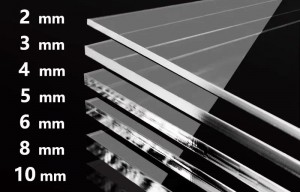
Aesthetic Preferences
Your aesthetic preferences play a significant role in choosing the right acrylic. Consider the color, finish, and overall look you want for your trays. Clear acrylic might be best if you prefer a sleek, modern appearance, while colored or frosted options can add a pop of personality. Think about how the trays will complement existing décor and whether they should stand out or blend in.
Environmental Conditions
Think about where the trays will be used. Acrylic is UV-resistant, making it suitable for outdoor use, but extreme temperatures can affect its performance. If your trays will be exposed to sunlight or varying weather conditions, ensure the acrylic type you choose is designed to withstand such environments. Check for additional features like UV stabilization if necessary.
Budget Considerations
Budget is a practical factor that influences material choice. While acrylic is generally more affordable than glass, costs can vary based on thickness, type, and additional features. Determine your budget early on to help narrow down your options and find the best value without compromising on quality.
Benefits of Using Acrylic for Custom Trays
Acrylic offers several advantages over other materials, making it a preferred choice for many. Here are some benefits:
Durability
Acrylic is highly durable and resistant to impact, which means your trays will have a longer lifespan and maintain their appearance over time. This durability makes acrylic an excellent investment for both personal and commercial use, reducing the need for frequent replacements.
Lightweight
Unlike glass, acrylic is lightweight, making it easier to handle and transport without compromising strength. The reduced weight not only facilitates easy movement but also minimizes the risk of accidents during handling.
Versatility
With a variety of colors, textures, and finishes available, acrylic can be customized to match any style or design preference. This versatility allows for creative freedom in design, enabling the creation of unique and personalized trays.
Easy Maintenance
Acrylic trays are easy to clean and maintain. A simple wipe with a damp cloth is often enough to keep them looking pristine. This low-maintenance feature saves time and effort, especially in high-use environments.
Cost-Effectiveness
Acrylic provides a cost-effective alternative to glass, offering similar aesthetic qualities at a lower price point. Its affordability, combined with its other benefits, makes it a practical choice for a wide range of applications.
Customizing Your Acrylic Trays
Once you've selected the right acrylic material, it's time to think about customization. Here are some ways to personalize your trays:
Engraving and Etching
Engraving or etching designs onto the surface of the acrylic can add a unique touch. Whether it's a logo, pattern, or text, this method creates a permanent and stylish imprint. Engraving can be used to personalize trays for gifts or to reinforce brand identity in a business setting.
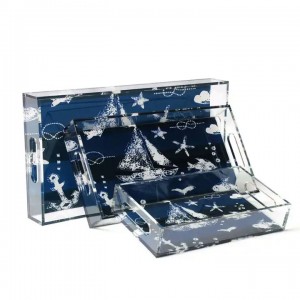
Adding Handles or Inserts
Consider incorporating handles or inserts to enhance the functionality of your trays. Handles can make carrying easier, while inserts can divide the tray into sections for better organization. Choose handles or inserts that complement the design and purpose of the tray.
Using Multiple Acrylic Types
Mixing different types of acrylic can create visually appealing contrasts. For instance, combining clear and colored acrylic can highlight certain areas of the tray, making it a focal point. Experiment with different combinations to achieve the desired visual effect.
Incorporating Technology
For a modern touch, consider integrating LED lighting or digital displays into your acrylic trays. This can create a stunning effect, especially for display purposes in retail or hospitality settings. Technology can elevate the design and functionality of your trays.
Creative Shapes and Designs
Acrylic's malleability allows for the creation of custom shapes and designs. Think beyond traditional rectangular trays and explore unique shapes that suit your style or brand. Custom shapes can make your trays stand out and add an element of intrigue.
Jayiacrylic: Your Leading China Custom Acrylic Tray Manufacturer And Supplier
Jayi Acrylic is a professional acrylic packaging manufacturer in China.
Jayi’s Custom Acrylic Tray solutions are meticulously crafted to captivate customers and showcase products most appealingly.
Our factory holds ISO9001 and SEDEX certifications, ensuring premium quality and ethical manufacturing standards.
With over 20 years of experience collaborating with leading global brands, we deeply understand the importance of designing custom trays that enhance product visibility and drive sales.
Our tailor-made options guarantee that your merchandise, decorative items, and valuables are presented flawlessly, creating a seamless unboxing experience that fosters customer engagement and boosts conversion rates.
FAQ: Choosing the Right Acrylic Material for Custom Trays

Is Acrylic More Durable Than Glass for Trays?
Yes, acrylic is significantly more durable than glass. It’s shatter-resistant, making it ideal for everyday use without the risk of breaking. Unlike glass, acrylic can withstand impacts and is less prone to chipping or cracking. It’s also lighter, which enhances portability while maintaining strength. This durability makes it a safer choice for households with children or commercial settings that require frequent handling.
How Do I Clean and Maintain Acrylic Trays?
Cleaning acrylic trays is simple: use a soft, damp cloth with mild soap to wipe the surface. Avoid abrasive cleaners or rough materials, as these can scratch the acrylic. For stubborn stains, a mixture of water and vinegar works well. Unlike glass, acrylic doesn’t require special cleaners, and regular maintenance keeps it looking clear and vibrant. Always dry the tray with a soft cloth to prevent water spots.
Can Acrylic Trays Be Used Outdoors?
Yes, but choose acrylic with UV resistance for outdoor use. Standard acrylic may fade or become brittle over time when exposed to direct sunlight, but specialty UV-stabilized acrylic resists discoloration and degradation. This type is ideal for outdoor events, patios, or gardens. Ensure the tray’s thickness and material type are suitable for weather conditions to maintain longevity.
What’s the Difference Between Frosted and Textured Acrylic?
Frosted acrylic has a semi-transparent, matte finish that obscures contents while adding elegance. It diffuses light, creating a soft, sophisticated look. Textured acrylic, however, features raised patterns or grips on the surface, enhancing traction and adding a decorative element. Frosted acrylic is best for privacy or minimalist design, while textured acrylic suits functional needs like non-slip surfaces in kitchens or bathrooms.
How Does Acrylic Thickness Affect Tray Performance?
Thicker acrylic (e.g., 1/4 inch or more) offers greater strength and durability, ideal for trays carrying heavy items or used in high-traffic areas. Thinner acrylic (e.g., 1/8 inch) is lighter and more cost-effective, suitable for decorative or lightweight use. Balance your needs: a 1/8-inch tray works for displaying cosmetics, while a 1/4-inch tray is better for serving heavy dishes or commercial use.
Conclusion
Choosing the right acrylic material for your custom trays is a crucial step in ensuring they meet your needs and preferences. By considering factors like purpose, thickness, aesthetics, and environmental conditions, you can select the perfect acrylic that will enhance both the functionality and appearance of your trays. With the versatility and durability that acrylic offers, you can create personalized trays that stand out in any setting.
Remember, the key to successful custom tray design lies in the details. Take your time to explore different acrylic options and customization techniques to create trays that are not only practical but also a reflection of your style. Happy designing!
If You Are in Business,You May Like:
Post time: Jun-18-2025

